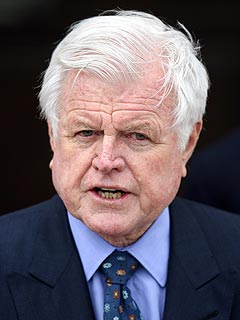

What does an art museum do when about 80 percent of its gallery space is closed for renovation? The Columbus Museum of Art, in the midst of a three-year renovation and expansion project, provides an interesting option. Curators have selected about 40 works from the permanent collection to hang in a few unaffected rooms. The choices mainly play on how artists use light in their works, peaking with a trio of Monet, George Bellows (a Columbus son), and Dan Flavin -- an impressionist, a realist and a cheeky post-modernist -- in one corner. The special exhibit is glass sculpture by Dale Chihuly, whose work is fun and intriguing. While not a pure art exhibit (though that hasn't stopped the Brooklyn Museum these days, either, where it has a splashy collection of rock and roll photography), Chihuly is an undeniable crowd-pleaser with a long connection to Columbus, which is important when the museum needs to work extra hard to bring crowds.
The curators push the crowd-friendly approach further, with neat results. Around the centerpiece sculpture of Chihuly's, a glass garden of sorts, are several current-day Etch-A-Sketches, so you can recreate it with your friends. In one of the galleries displaying the permanent collection are a few small tables so children, in size and spirit, can draw and play with blocks to learn about the creative process.
The museum's registrar told me (oh, yeah, the other crowd-friendly change: having the staff mingle with visitors) the hands-on approach is inspired the education department. Interacting with the subject matter has long been a staple of science museums, he said, and people are more likely to remember the lesson if they can mold it themselves. "We're still learning what it means," he said of how visitors and staff meld the changes with the typical museum-going experience.
Sure, the arts, particularly in a city's lead museum, are always a formal, if not chilly affair, but they shouldn't be stilted and they shouldn't be exclusive. Too often the greats are viewed as only the domain of the highbrowed few. Great artists, their champions and their presenters know how to expand the audience to everyone, and expand everyone's palette. With so much of its building closed, the Columbus Museum of Art had to think differently about how it presents its art so its crowds didn't dwindle to a damagingly small number. The purists will probably scoff at their choices, but wonderful art is only at its most powerful when as many people as possible can immerse themselves in it and have fun doing so. If these changes help achieve that, bravo.






















